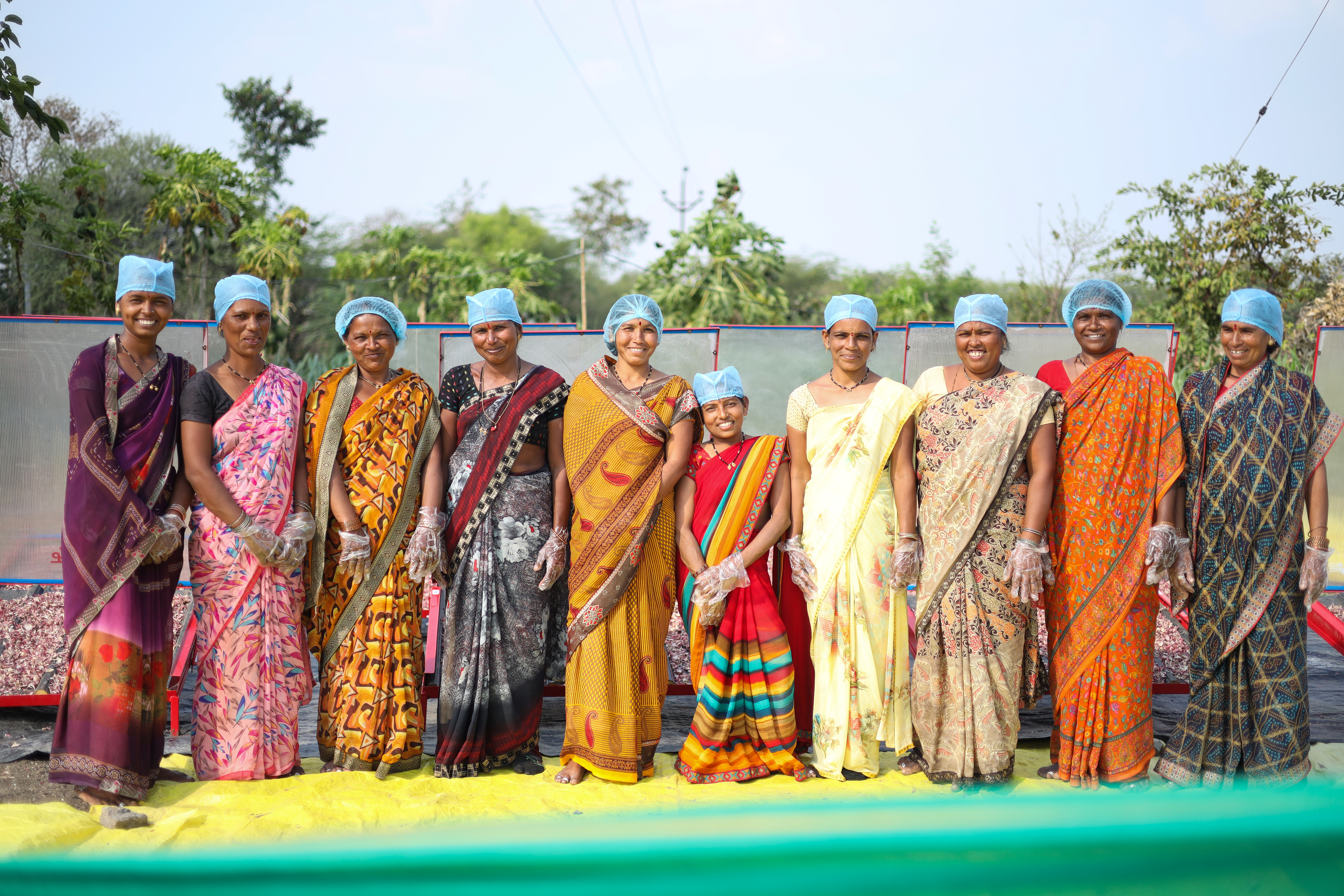Small-scale entrepreneurship in processing of agricultural produce is at the core of the solution. Under the GIC programme, women were supported to establish self-owned solar-powered dehydration units, in collaboration with S4S. S4S is a private social enterprise that developed the units. Each unit includes equipment such as pulverisers, sealers, and packaging tools, enabling decentralized, energy-efficient food processing.
To support the 2,500 women entrepreneurs in their operations they received training in areas including the use and maintenance of machinery, hygienic food processing, storage, and packaging. A second focus area was financial literacy, covering budgeting, bookkeeping, and accounts management, to enable the women to run their business well informed and responsibly. Furthermore, the women were introduced to the environmental benefits of the solar technology and reductions in food waste they are contributing to.
The project served as the basis for developing a structured, user-friendly training module which was refined throughout the implementation period. With this module in place, the approach can now be more easily scaled and replicated. The materials were translated into local languages such as Marathi and Telugu to ensure accessibility and are now being used by S4S Technologies in other projects.
Many of the women involved were previously engaged as landless farm labourers. The model offered a pathway to greater income stability and economic participation through ownership and value chain integration.
